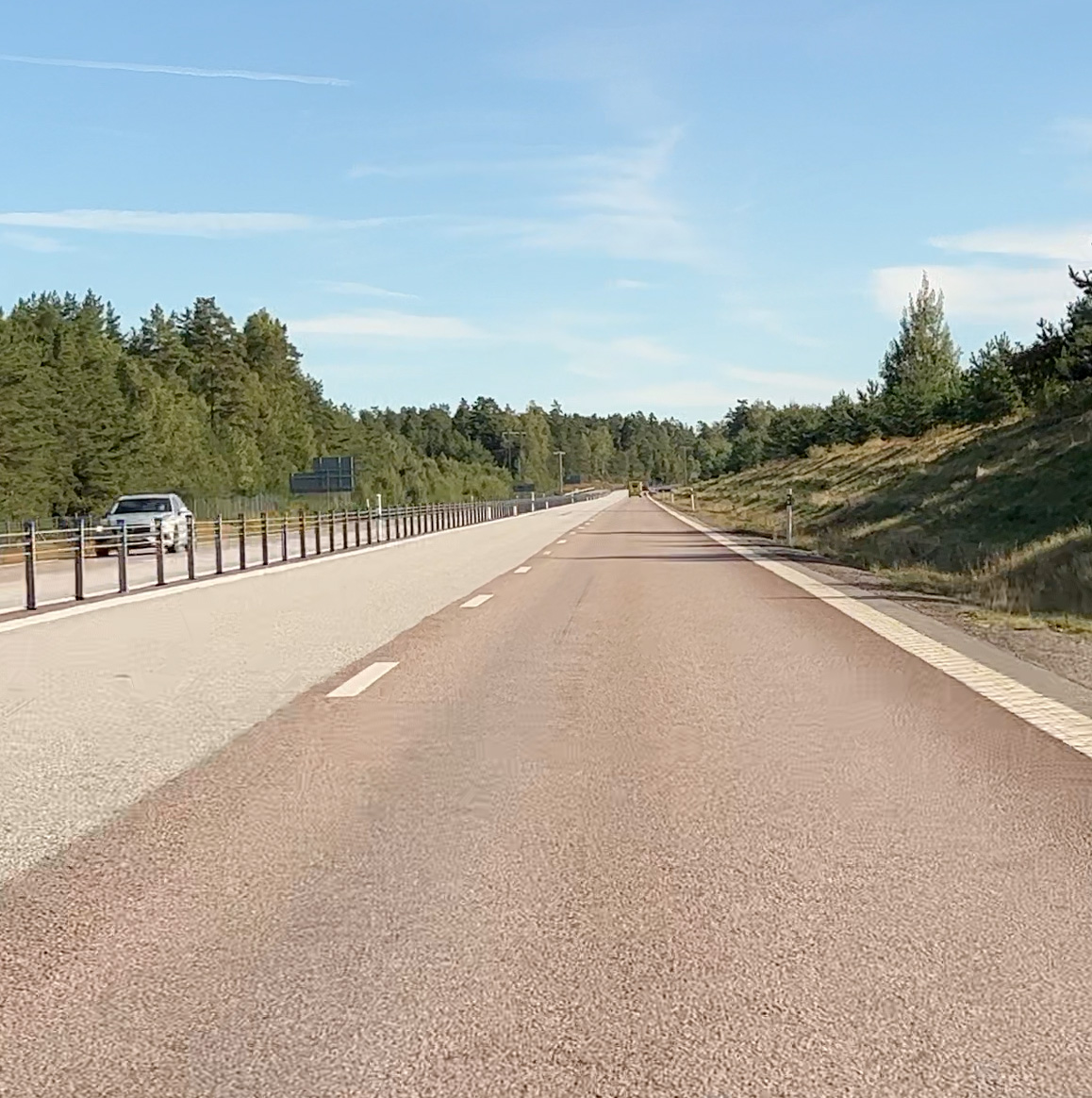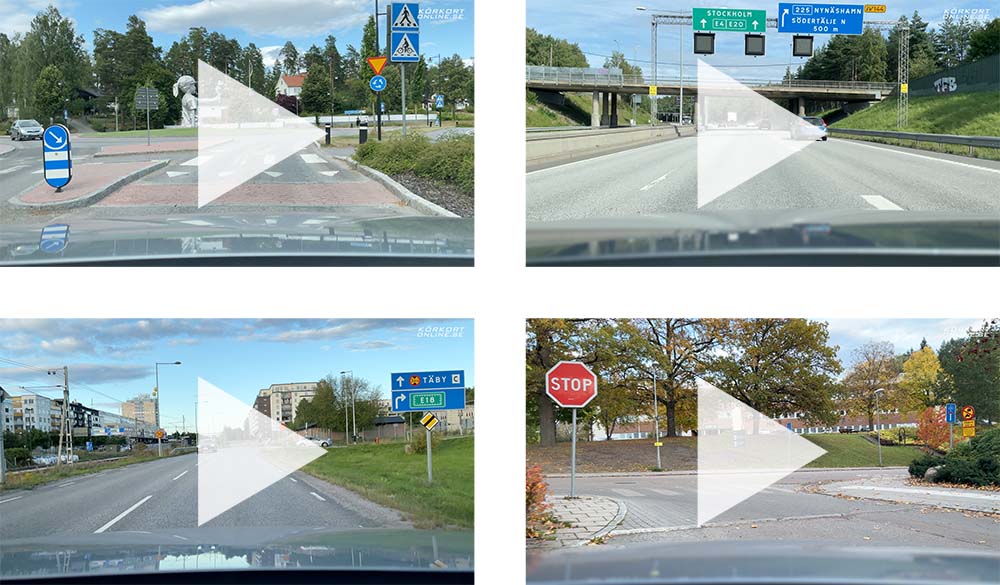Körkortonline > Theory & regulations > Tiredness
Tiredness in traffic – risks & reducing tiredness
Tiredness is an indication that your body needs to recuperate in order for all your senses to function optimally.
It is forbidden and punishable to drive if you are incapable of driving the vehicle in a safe manner. Your reaction time after a sleepless night is comparable to that of a drunk person.
Causes of tiredness

Long and straight roads increase the risk of tiredness.
- Exhaustion.
- Sleep deprivation.
- Alcohol, drugs and certain medications.
- Monotony:
Dangers and risks associated with tiredness
Nearly all senses and abilities are impaired. The most serious impairments in terms of traffic are the following:
- Poorer concentration and loss of coordination.
- It takes longer to perceive things (some things you fail to notice at all).
- Poor decision-making skills.
- Reaction time and reflexes become slower.
- Difficulty maintaining a steady course and speed.
Indications of tiredness
- Blurred vision.
- Problems concentrating and thinking clearly.
- Dry mouth.
- Frequent yawning.
- Feeling cold.
- Difficulty maintaining your speed.
- Head feels heavy.
- Overreacting.
- Muscle relaxation.
- Optical illusions.
- Difficulty keeping your eyes open.
Avoid tiredness
- Drive when rested.
- Make sure the car is not too warm.
- Take a break after driving for about one hour (get out of the car).
- Do not eat heavy foods (meat etc.).
Reduce tiredness
The best and only right way
- Have a long sleep.
Reducing tiredness temporarily
- Short nap (no less than 15 minutes).
- Take a break/stretch your legs and get some fresh air.
- Coffee or other forms of caffeine can have the same effect as a nap.
Tiredness glossary
- Microsleeping: When you nod off and wake up almost immediately with a jerk of the head. Microsleeping lasts for a very short period of time, often less than a second.
- Sleep apnoea: Breathing problems that disrupt your sleep at night. The lack of sleep resulting from this issue leads to a significantly higher risk of tiredness-related traffic accidents.
- Nap: Light and short sleep (15–30 minutes).
Statistics on tiredness
- Most tiredness-related accidents occur between 02.00 and 05.00.
- Single-vehicle accidents are the most common type of tiredness-related accident.
- 40% of single-vehicle accidents outside of built-up areas occur at night or dawn.
- The risk of accidents increases with proximity to your destination, as you relax thinking that you are almost there.
Latest forum posts
Topic
Posts
Latest post
- << Alcohol & drunk driving
- Tiredness ↑↑
- Vision >>


